Withlacoochee RiverThe Withlacoochee River originates in the Green Swamp, east of Polk City, Florida (about 25 miles south of the Ridge Manor Trailhead). The river flows west, then north, and then turns northwest and finally west again before it empties into the Gulf of Mexico near Yankeetown, Florida. The river is 86 miles long. The Rainbow River, arising out of Rainbow Springs, joins the Withlacoochee near Dunnellon. The name means "little big water" in the Creek language.The Green Swamp is sometimes called "Florida's Liquid Heart." It lies in the backcountry between Orlando and Tampa. The highest point of the Floridan Aquifer lies in the swamp and is known as the Green Swamp High, rising 132 ft above sea level. Like an underground water tower, the Green Swamp High provides pressure for a multitude of springs and supplies fresh water to the majority of Florida's population. Five major rivers emerge from the Green Swamp: Withlacoochee, Ocklawaha, Hillsborough, Peace, and Kissimmee River. (Ocklawaha flows north then east into the St. Johns, Hillsborough flows southwest into Tampa Bay, Peace flows south then west to Port Charlotte, and Kissimmee flows south to Lake Okeechobee.) | |
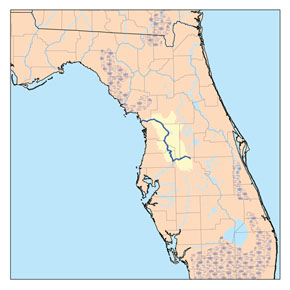
|
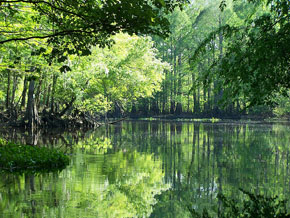
|
Wild Plum"Few plants herald the approach of spring as do the wild plums," a quote from the website of the Pinellas Chapter of the Florida Native Plant Society. The wild plums along the Withlacoochee State Trail are Chickasaw Plums (Prunus angustifolia). Red or reddish-yellow plums ripen by early summer. They are very tart, but make a good jelly. | |
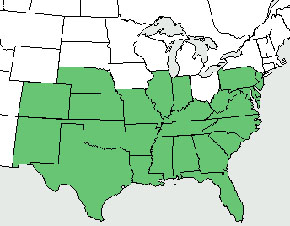
|
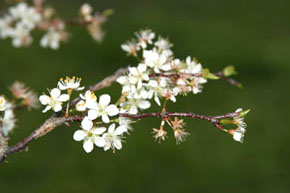
|
LimpkinIn the U.S., limpkins (Aramus guarauna) are found only in Florida. Limpkins inhabit freshwater marshes and swamps where they probe the bottom for apple snails. When a Limpkin finds a snail, it carries it to land or very shallow water and places it in mud, the opening facing up. It deftly removes the operculum or "lid" and extracts the snail, seldom breaking the shell. The extraction takes 10 to 20 seconds. It often leaves piles of empty shells at favored spots. Limpkins are known for their piercing, banshee cries, especially at night. The cry of the limpkin has been used for jungle sound effects in Tarzan films and for the Hippogriff in the film Harry Potter and the Prisoner of Azkaban.
Listen to it: | |
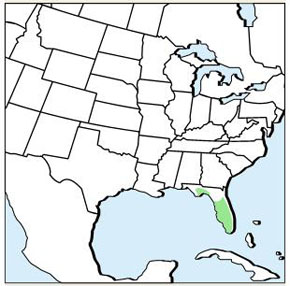
|
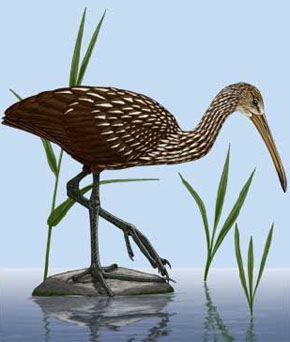
|
Redbud TreeThe Eastern Redbud (Cercis canadensis) is a large shrub or small tree native to North America from Southern Ontario south to northern Florida. In the wild, Eastern redbud is a frequent native understory tree in mixed forests and hedgerows. The fruit are flattened, dry, brown, pea-like pods. It's showy, pink flowers are pollinated by long-tongued bees, such as blueberry bees and carpenter bees. | |
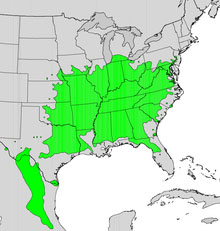
|

|
Florida Sandhill CraneThe Florida Sandhill Crane (Grus canadensis pratensis) is a subspecies of Sandhill Crane and lives year round in Florida. They usually make their nests in water to protect against predators. Sandhill cranes frequently give a loud trumpeting call that can be heard from a long distance.
Listen to it: | |
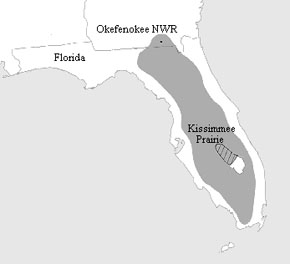
|
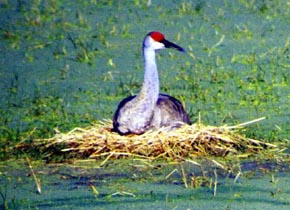
|
Southeastern Pocket GopherThe white or tan sand mounds seen scattered about in fields and roadsides on the drive over to Withlacoochee State Trail and along the trail are not fire-ant nests. The sand mounds are made by Southeastern Pocket Gophers (Geomys pinetis), rat-sized, tube-shaped animals, rarely seen on the surface. Adapted for a life underground, they have huge incisors, enlarged front feet with long claws, a short naked tail, and tiny eyes and ears. They also have a pair of external, fur-lined cheek pouches, in which food and nesting material is transported to chambers in the burrow. Each pocket gopher digs an extensive system of tunnels. As they dig, the soil in the tunnel is pushed upward through a tube to the surface, where it appears as a sandy mound. Tunnels are then plugged from inside. A line of fresh mounds across a field marks the pocket gopher's passage. This behavior has resulted in locals referring to pocket gophers as "sandy mounders," which was later corrupted to "salamanders." | |
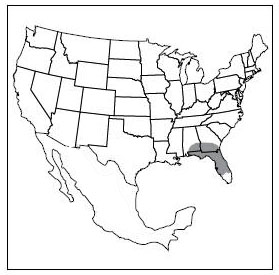
|

|
Eastern BluebirdThe nesting boxes seen along the WST are for bluebirds. The Eastern Bluebird (Sialia sialis) is a year-round resident of Florida. The Florida population of eastern bluebirds increases during the winter as birds that summer further north move into the state for the winter. Nesting can commence as early as March and continue well into the summer. Two and sometimes three broods are not uncommon.
Listen to it: | |
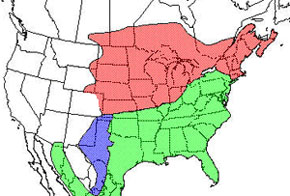
|

|
Pileated WoodpeckerHeard but not seen along the WST was the Pileated Woodpecker (Dryocopus pileatus), the largest woodpecker in North America. Pilieated woodpeckers drum on hollow trees with their bills in order to claim territory. They dig rectangular holes in trees to find ants.
Listen to it: | |
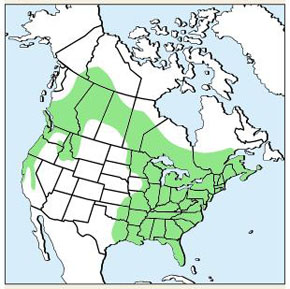
|

|